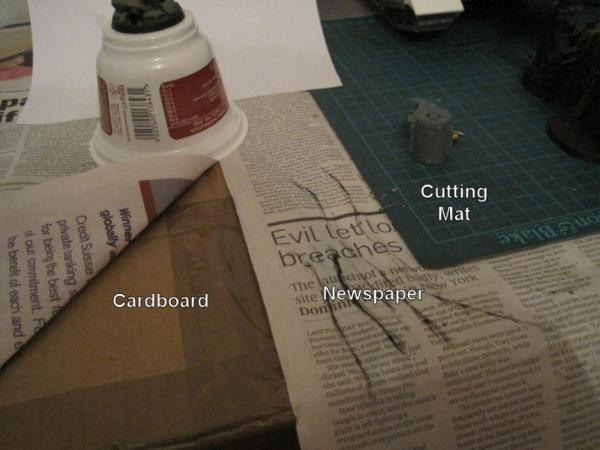"Storage Hints and Tips" or "How Not to End Up With a Big Pile of Stuff"
We all know how it goes. First thing you do is buy one small box of miniatures, or maybe just one book. You turn around and there's maybe two unopened boxes, a bunch of miniatures in various stages of completion, some bitz hanging around in a tin sharing space with stray buttons and paperclips, and the next thing you know you've lost one of your units and find it two years later under a bed.
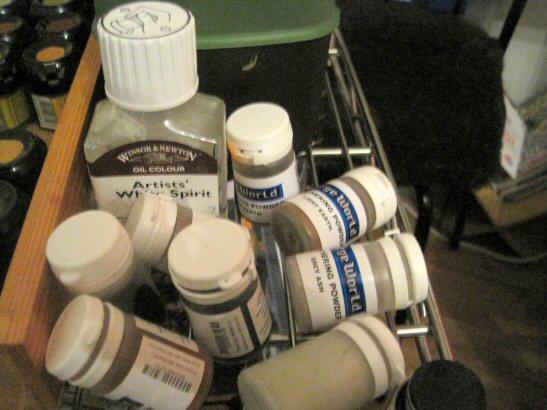 Pictured
Pictured:
Homeless stuff, strewn about, needing a home. Will you help a poor weathering powder today?
In order to avoid this fate, your best bet is to store your models and other modelling and painting related gear is a single area, organised for simple retrieval of any one thing that you know you need. Each set-up is unique, based on the space and facilities available. My first set-up was done in the corner of a largish bedroom, moved to its own room, and is now back in the corner of our lounge because it's simply more social there.
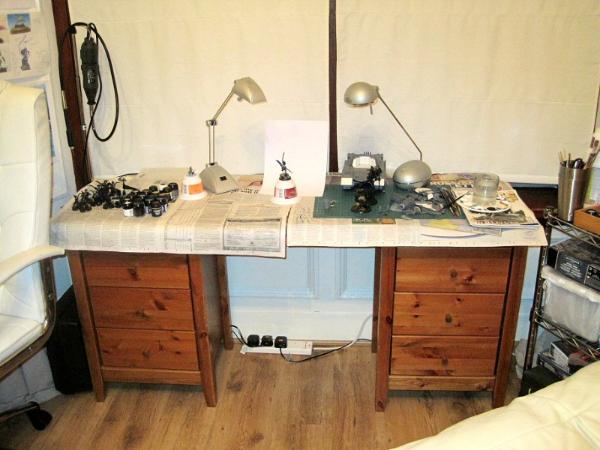
On a side note, this solid wood desk was £45 including delivery from a local second-hand furniture store.
The cardinal rules of organisation are fairly simple. I'm sure you've probably already heard of the first one.
Rule #1: A place for everything, and everything in its place.
This simply means that you have to plan your storage, even if only a small amount. I have 'X' amount of stuff and need to store it. You find an area where you can store this, and then figure out what kind of storage is most suitable for what needs to be stored. Then you remember where everything "should" be. This is so you can put it back, which is where the second part of the phrase comes in. If it's not in its place once you've finished with it, then it's just clutter.
Rule #2: Organisation relies not on remembering where everything is, but on the linking of themes.
Somewhat of a difficult one to explain, but you can think of it as a mental filing system. It is far easier to remember that your hobby saw is a tool and should be in the tool section than it is to remember that it's in Box 3B, under the random collection of things you dumped in there. Compartmentalize the things you associate with the hobby. Brushes, paints, tools, basing materials, bitz and miniatures are probably the sections most people use. I separate my basing materials into pre- and post-painting (Box1 and Box2), but that's purely a personal and space thing. Also use larger boxes or other storage solutions (a general term for "things to put stuff in") to help keep together linked items.
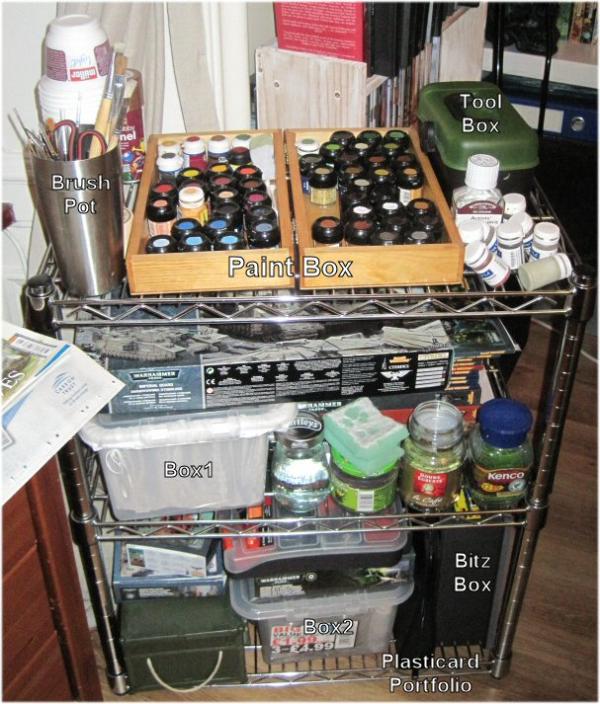 Rule #3: Use suitable containers for both storage and use.
Rule #3: Use suitable containers for both storage and use.
Just as it says, think about what storage you're using. Often, what the product came in is not the best thing to keep it in for storage and use. Let us take for example the humble miniatures box. While it is fine to keep some unpainted miniature sprues together, actually keeping your lovingly painted and assembled models in the box later is simply asking for trouble and scratched pieces. Make sure what you're using is suitable, easy to store and easy to use. It's all very well keeping sand in a plastic bag, but it's a pain in the bum to get some out and on the base without ending up with a living room looking like the Sahara Desert. Also keep in mind what you will be using regularly as opposed to what you'll only need access to occasionally. I use my paints a lot, so they're on the top of my shelves, easy to pick up or put back at a moment's notice. However, I have to dig for Box2, which holds post-painting basing stuff and generally means I'll be finishing off an entire unit with it, so it's worth the extra time to drag things off and put them back afterwards. I'll cover ideas for suitable, cheap storage for the various types in Hints and Tips next.
 Rule #4: Make the most of your available space.
Rule #4: Make the most of your available space.
Space is always at a premium, or it will be if you haven't filled things up yet. Making sure that no inch of that shelf unit is wasted is common sense, though it can take a lot of trial and error to fit things together without gaps. If you're very organised, you can plan it with measurements and everything before you start, but most people will fiddle about until it works.
******
Hints and Tips
Recycling is a brilliant way to get all sorts of fun storage containers for your hobby stuff. While I'd always recommend using a miniatures case specifically built for that purpose (or at least the foam is), storing basing materials, paint pots, tools and other such things can be relatively cheap. Especially if you or anyone you know have a coffee addiction.
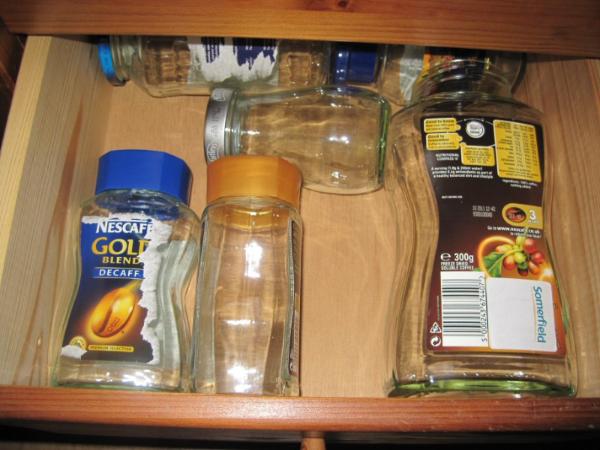
Coffee jars are solid containers that are easy to clean, difficult to stain and relatively spacious. They also usually come in all sorts of sizes. Small empty spice or salt jars often have lids with shakers, perfect for leaf litter or similar scatters. Jam jars are mostly waterproof and good for holding things which need a bit more insurance against accidental spillage than coffee jars do. Glass is always better than plastic unless you're dealing with children or very clumsy people, as glass is very unreactive and will generally hold anything without - for example - unexpectedly melding with the substance or at the extreme end, melting a hole in the bottom.
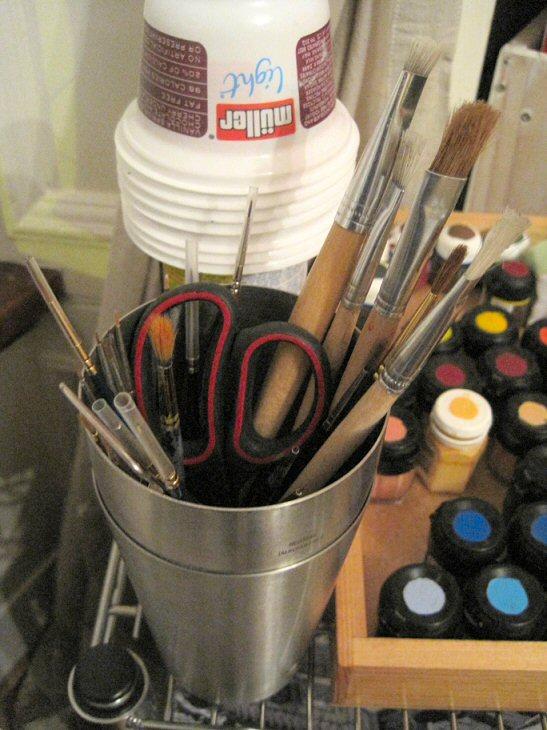
My brush pot is an old cocktail shaker.
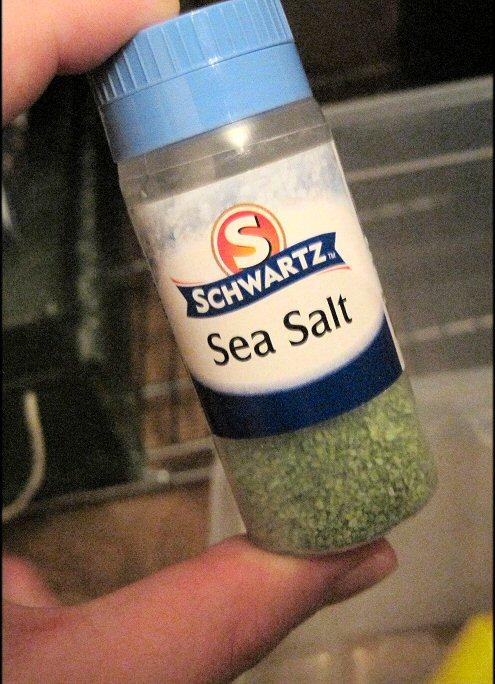
Shaker pots can be very useful! Make sure you get one which can be closed when not in use though.
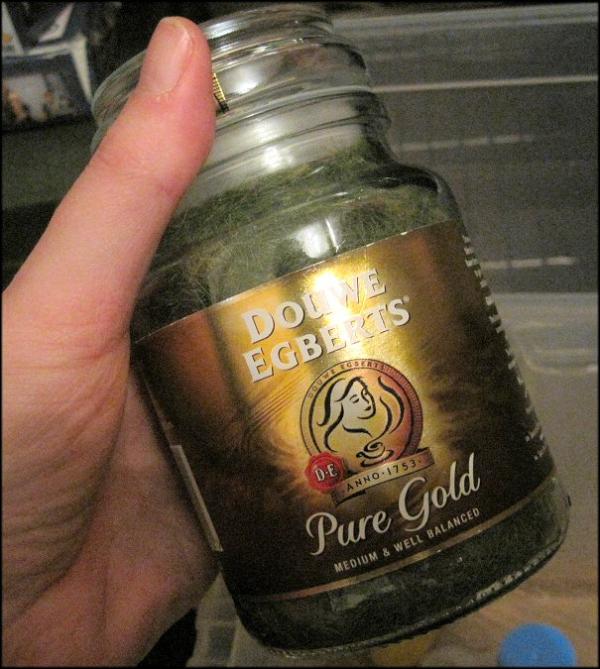
Static Grass is evil, evil stuff. I have a dispenser and some funnels, but getting it from the one to t'other is a nightmare.
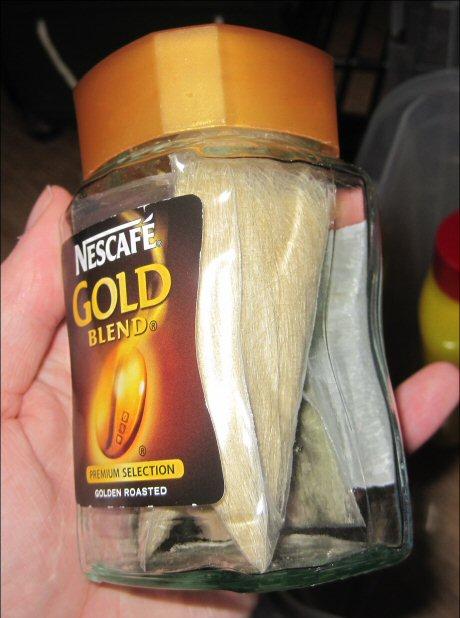
This stuff is great but needs speciality glue to stick properly. Also, why does everyone always do huge tufts with no surrounding vegetation with it? That's not how grass works...
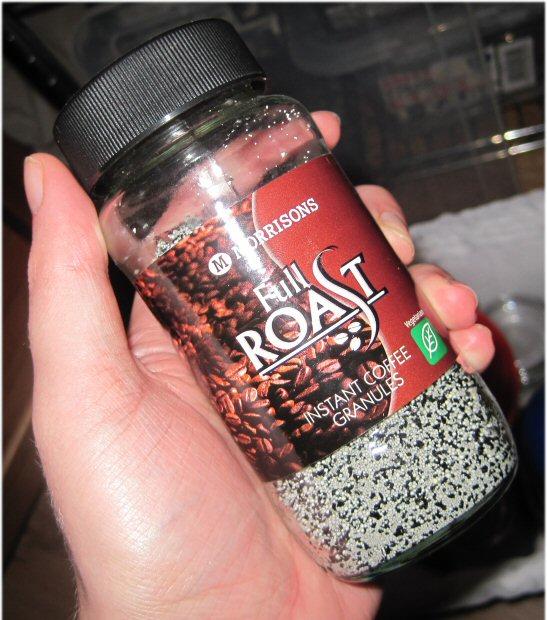
Got this from Imperial Armour: Model Masterclass, it's full of the contents from a used Britta filter, and can be used for rivets.

Sure you can get a huge bag of masonry sand sitting in your front room, or you can buy extensively overpriced modelling sand, but have you ever actually looked at bird sand? Also bird grit, mixed together for really interesting textures. Comes in 1kg bags for about 80p, pour into a decently sized coffee or jam jar and enjoy for the next year or so.
I do not discriminate about my coffee, but it has to be said, I like Nescafe Gold the best.

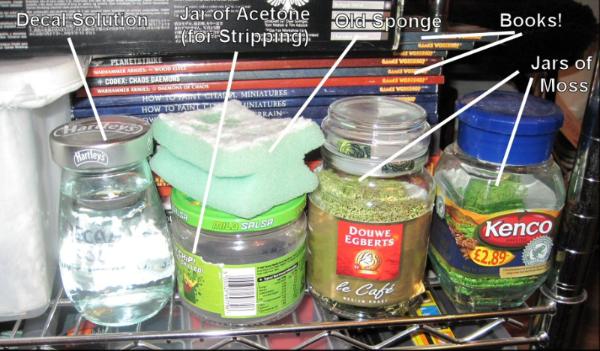
More jars. Acetone for stripping models, decal solution for softening decals and making it easier to place them. I got the mixture of white vinegar and water from a recipe online, but haven't tried it yet. Moss for making small bushes or canopies. All of these really stink when used, but keeping them in jars means the room remains stink-free until they're needed. Don't forget to store your books somewhere, though your own bookshelf, if you have room, is perfectly fine.

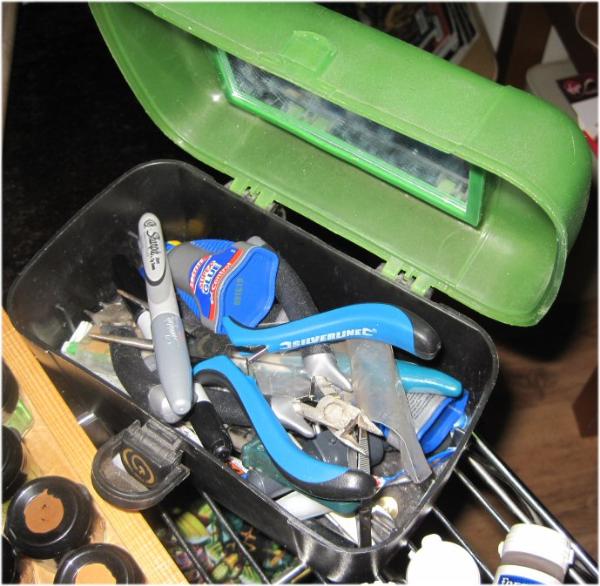
This used to be an old make-up box, hence the mirror. Really, I'd prefer a proper toolbox, but this takes up very little space and keeps everything together.
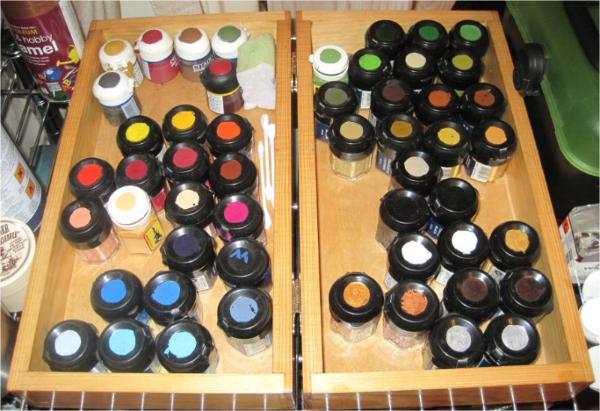
While I have an open artist's travel box for putting my paints in, and have painted the tops to give me an idea of each paint's colour, most people go for
paint carousels for their paint collections. I try to keep my paints in order, but sometimes it gets a bit messy

. I have at least one of every main colour, all the inks and most of the foundation paints, but half of them are currently on the desk, ready to be used.

This is a simple, cheap black A4 Portfolio Case from The Works. It holds all my plasticard sheets and tubes, keeps them together, unbent and not in the way of anything and takes up hardly any space. One of my favourite ideas/finds.
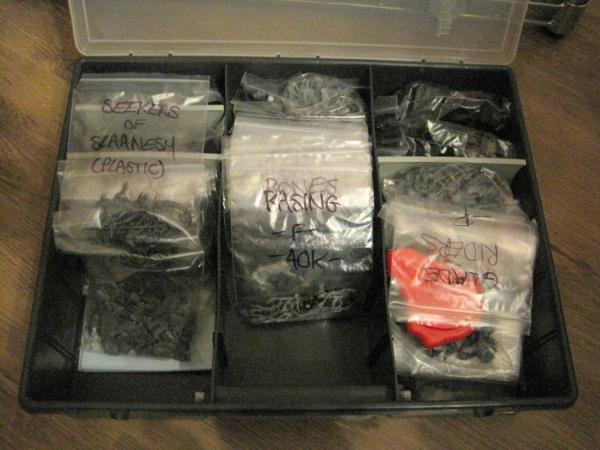
Toolboxes from DIY places such as B&Q are the natural choice for Bitz Boxes. The partitions allow you to keep the bitz seperate depending on use. I go the whole hog and put each kits bitz in individual plastic bags and label them for quick identification and being able to get to "that bit from the Dragon sprue" within seconds, but I'm quite clearly crazy

.
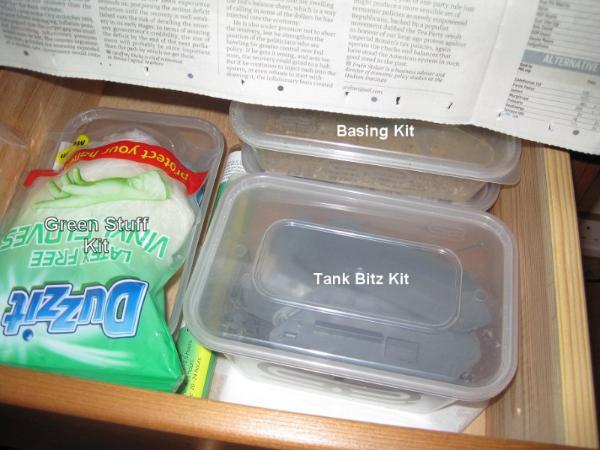
My desk has six drawers, two full of empty glass jars

, one with the Dremel bits in, one for my slightly more dangerous or larger tools that won't fit in my toolbox (hobby saw anyone), one with my camera stuff in, and one that holds a selection of plastic tubs from Chinese takeaways. The one underneath the latex gloves (green stuff gives me a rash), holds my sculpting tools and a small tub of Vaseline, so when I want to sculpt, I just lift it out. Another tub holds a premade mix of sand, grit and a plastic spoon from an old picnic set. I can easily pour the mixture onto PVA with the spoon, over the tub so as not to make any mess. Once I'm done, I put the lid back on and back in the drawer it goes. My partner keeps his tank bitz he can't fit into the bitz box in another tub here, and another one for holding stamped plastic sheets for his basing, they're just the right size for them.
Most places like Poundstretchers or other "generic" cheap stores will have cheap plastic boxes with lids, often transparent or brightly coloured, marketed as storage solutions. You can get creative with these, but there are a few things I would check before you buy any. First, and foremost,
measure the space, it's all very well eyeballing it but if it's out by an inch, now what? Secondly, think about interesting, out of the way things to do with these. There are some great "under-the-bed" ones which simply roll under the bed and back out again, which could be perfect for some sets of scenery, and some beds. They're usually very cheap. I use them to keep my jars all together and easier to find and less likely to fall over, also for holding scenery and my partner's tanks as he hasn't got a tank box yet.

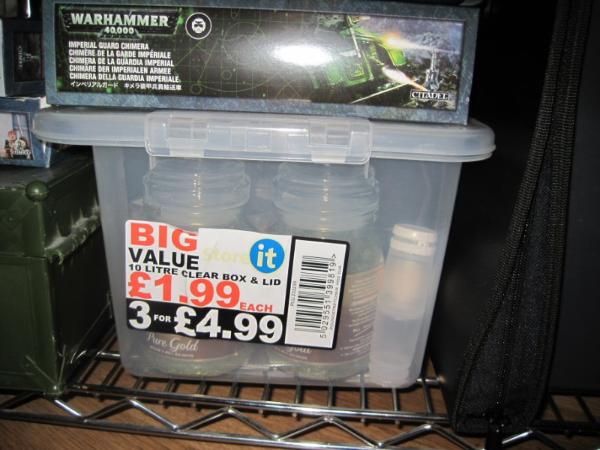
They really are very cheap!
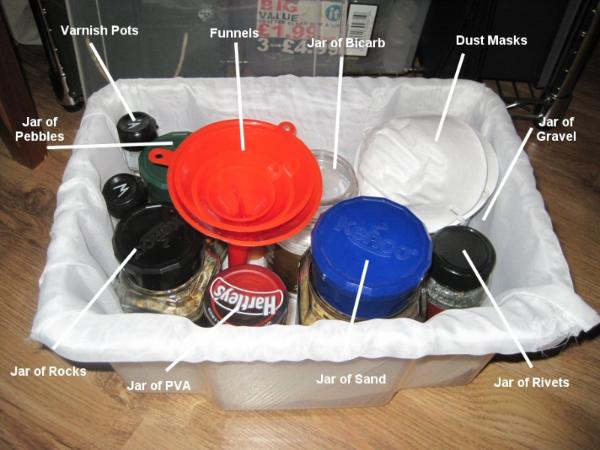
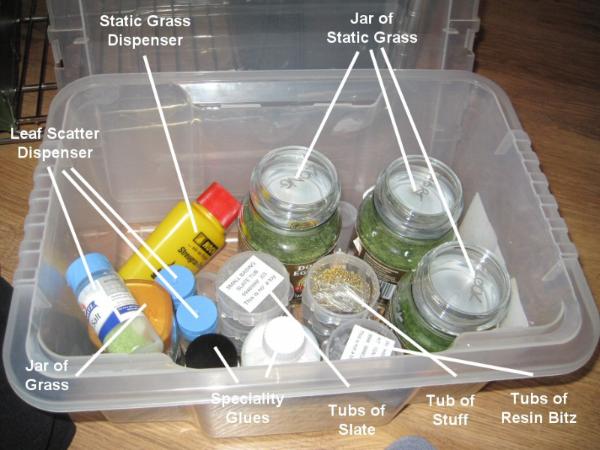
Pre- and post-painting basing, but lack of space has made some things shift out of place. Sometimes I have to check both boxes to find what I want.

Pebbles and rocks from my parent's gravel driveway (ahahahaha) - cleaned of course. Really do need to swap some things from this one to the other and vice-versa. Great slate tubs from the
40k and Fantasy scenery box. Okay resin pieces.

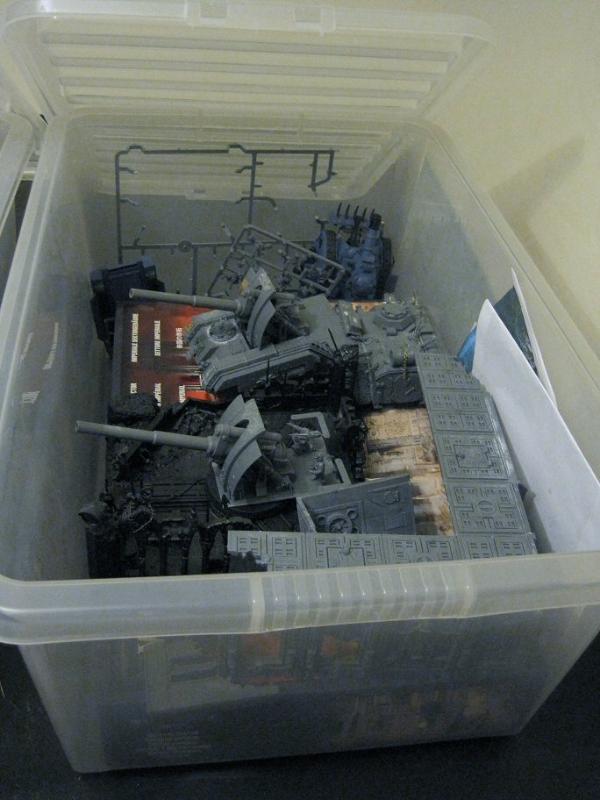
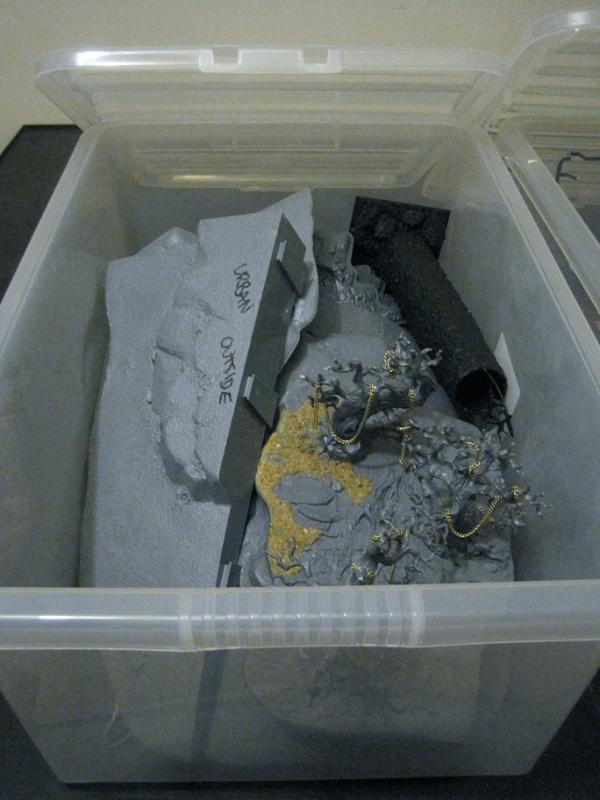
Scenery! (and tanks)
And finally, my last tip:
Protect your Surfaces
